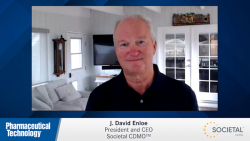
OR WAIT null SECS
- About Us
- Advertise
- Contact Us
- Editorial Info
- Editorial Advisory Board
- Do Not Sell My Personal Information
- Privacy Policy
- Terms and Conditions
© 2025 MJH Life Sciences™ , Pharmaceutical Technology - Pharma News and Development Insights. All rights reserved.
PDA Meeting Highlights the Challenges of Personalized Medicine
Here in sunny Arizona, PDA is holding its annual conference, a chance to present data and discuss all aspects of sterile manufacturing. The theme for the first day of sessions was personalized medicine.
Here in sunny Arizona, PDA is holding its annual conference, a chance to present data and discuss all aspects of sterile manufacturing. The theme for the first day of sessions was personalized medicine, an area where cell-based therapies, vaccines, and antibody therapies hold much promise. The day began with a keynote address by David Shanahan, president of the Mary Crowley Research Center. Shanahan discussed a vision of cancer treatment as highly personalized, where each patient’s cancer would be analyzed at the genetic level and matched to a combination therapy that specifically targets the markers expressed by the tumor. Antibody therapy would then be followed by an antigen-matched vaccine. Shanahan envisages a day when every hospital pharmacy will be stocked with a hundred or more highly specific therapies, with good enough side effect profiles that they can be delivered in combination or in rapid succession. While this is still a vision of the future, Shanahan believes that it’s one that can be realized: genomic tools have become fast and portable, mAb therapies are proliferating, and small, flexible manufacturing facilities exist that can produce multiple products in small quantities.
Shanahan’s presentation was followed by a breakout session on manufacturing of personalized medicine. The speakers, Greg Whitehead, director of corporate quality assurance at Dendreon, and John Butler, Global Project Leader at Bayer Innovation, discussed the manufacture of autologous therapies. Autologous therapies, which are therapies derived from one patient and designed for one patient, present special manufacturing challenges. Whitehead explained in his talk that autologous therapies had to be manufactured meeting all the requirements of GMP, but with additional control to ensure integrity from the moment the cells are collected from the patient to the moment they are infused back in. In addition, Dendreon’s therapy is manufactured in and delivered to the patient in a short timeframe that doesn’t accommodate long-term sterility assurance. To accommodate this, he explains, Dendreon pays careful attention to traditional sterility controls, and uses orthogonal methods such as gram staining and rapid microbial testing. The short turn-around time also makes batch review and deviation resolution difficult, problems that are countered with efficient scheduling and robust contingency plans.
Butler discussed the manufacture of an autologous vaccine product, created by raising antibodies against a patient’s tumor. This particular product is highly variable from patient to patient, which means from batch to batch. Butler discussed strategies for reducing cost that included implementing automation early on, avoiding redundancy of assays, and reducing QA/QC sample requirements. Because the volume of product they make is so low to begin with, QA/QC sample requirements can be a significant proportion of the volume produced. As an example, Butler said that of 100 vials produced in a lot, only 20 of those were destined for the patient, and the rest used for QA/QC. Butler concluded his talk by stressing the importance of working closely with regulators to address manufacturing issues that are unique to this class of product.


